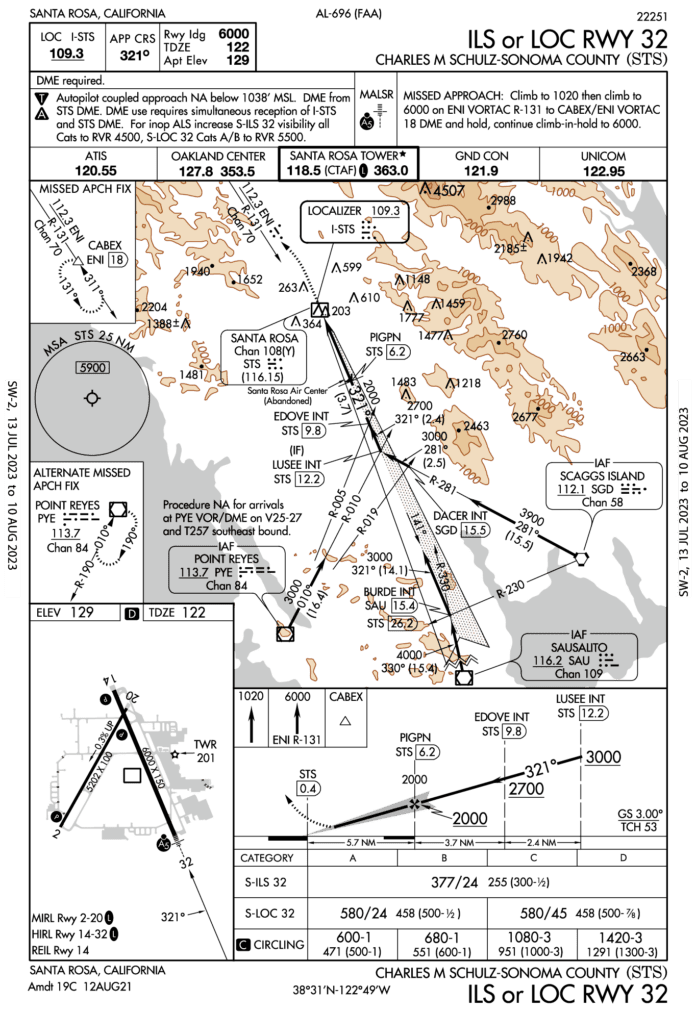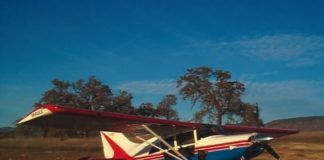Autopilot Coupling NA?
See the KSTS ILS Runway 32 approach. It states that autopilot coupled approaches are NA below 1038 feet. DA is 380 feet. Why the prohibition on autopilot use?
Tim Massey
Kentfield, California
The navigation information you see (CDI/VDI) is heavily damped. The raw signal sometimes bounces all over the place—less so with GPS than VOR/LOC/GS, but it still does. The damped display we see is perfect for our eyes, recognition time, and ability to control the aircraft.
A less damped or even raw signal is fed to the autopilot. Thus, the autopilot can react much more quickly and occasionally more aggressively than you would. This is how it’s generally able to keep the needle you see nearly dead center. (Without the damping, that needle would still dance a lot more.)
Not all ILS installations are created equal. While most are installed and tuned for good precision and a steady signal, some are subject to fluctuations in the signal, often due to terrain, buildings, or other factors. With the damping you get in your instruments, those fluctuations are usually not visible. However, the autopilot sees them and will react to them. So, in these cases it can be commanding large, rapid control inputs. Those can be at least disconcerting as you see the controls gyrating all over the place, or at worst, can stress the airframe. Thus, some ILS approaches are annotated that autopilot coupled approaches should not be flown beyond a certain point, usually due to irregularity of the raw signal.
Years ago I flew out of the Central Coast of California and frequently used the Monterey ILS 10R for practice. It was similarly marked to prohibit coupled approaches, in this case I believe it was inside the FAF. One day, just to see what would happen and not knowing the above, in VMC, I flew the approach and remained coupled. “Paint mixer” is how I described the ride to pilot friends. I ended up disconnecting the autopilot after a short time.
—Frank Bowlin
Circling NA?
I have a pilot-proficiency clinic upcoming that’s based at KHND. I’m looking through the approaches at KHND and both the VOR-A and the RNAV-B say circling to Runway 35L is NA at night. I presume this is a combination of the steep approach coupled with the terrain to the south that precludes circling on the south side of the airport at night. But it made me question a few things. 1) would an approach to 35L on RNAV-B approach be considered a straight in approach or a circling approach since it’s named RNAV-B? 2) why doesn’t 35R fall into the same NA at night category? 3) given the 6.5 percent descent, was this approach designed basically as an approach from the south circle to land from the north? 4) why doesn’t the RNAV-B have S-35L minimums listed if you could actually approach straight in?
Thanks for the info! I’ve really found IFR magazine helpful as a newer instrument pilot who’s still trying to soak up all the knowledge I can!
Marc Breen
Fort Collins, Colorado

If an approach has a prohibition against a circle, it’s referring to the minimums, not how you might choose to actually get to the runway.
Circling mins do not preclude landing straight in without circling. So, ignoring the night prohibition for a moment, you can land straight in to Runway 35L, so long as the weather meets the circling mins and all the requirements of §91.175 can be met, including normal maneuvers. Straight-in minimums have different criteria for obstacles than circling minimums. In this case we’d suggest that the steep slope to the runway—more than double the normal three degrees—precludes lower straight-in minimums.
Any approach identified with a specific runway in the title will have straight-in minimums to that runway. Lacking an identified runway, as in this case, means there are only circling mins. This will be from the needed descent rate, as here, or that the runway is too far off of the final approach course as in the VOR-C (although even that requires a descent path over nine degrees from CIXOG to the runway.)
As we’ve said in multiple articles, a night prohibition is usually because of an unlit obstacle penetrating the obstacle evaluation slope. In this case, the terrain itself is most likely that unlit obstacle. Why the prohibition doesn’t apply to Runway 35R is most likely that it’s just far enough away that the slope isn’t penetrated.
We’d guess that it wasn’t possible to design an approach from the north because that terrain to the south would require an unacceptably high climb rate on the missed.





